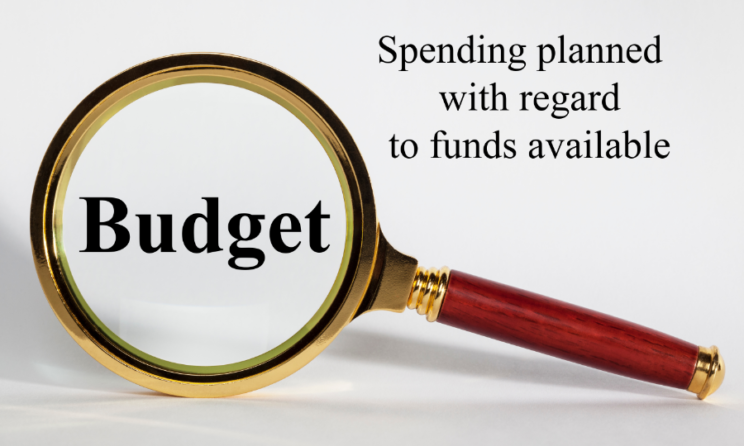
Only 43% of small businesses with employees create a budget that forecasts revenues, expenses, and profit. This number rises to close to 80% if you add sole proprietorship businesses. This staggering statistic can be explained by many factors. Many business owners believe that their company is too small to be able to afford a budget. Some owners feel that they don’t have the money to budget. The main reason small business owners fail to manage their budgets is because they don’t like it or don’t know how.
What is a Budget? A budget is a plan which outlines goals and explains how your business will handle financial resources and expenses. To calculate profit, it is simply a sum of sales (revenues) and expenses (costs). A monthly projection is a monthly budget. This allows you to see trends and seasonality in your business as well as capture infrequent expenses.
The budget is the plan that helps you determine whether you are moving towards your goals. This gives you the information that you need to make intelligent, informed decisions about how your business should be run. Budgeting is essential because it allows you to determine whether you have enough money for operations, expansion and profit. No matter how small the business is, every owner of a small business should budget.
The budget is prepared by the partner or owner of 84% small businesses. You can do this with your accountant, CPA, or other professional. This task is not difficult, but most small-business owners don’t know how to do it and avoid it.
Budgets for business do not have to be complex. With a few guidelines, you can make simple and efficient business forecasts. Ask your CPA or trusted business peer for guidance if you’re still not sure how to approach the task. You can also find great resources, from books to online programs to seminars. There will be learning curves in creating a budget and using it to make business decisions.
These are the guidelines you should follow when creating an operating plan.
Reexamine Your Financial History or Industry Standards
If your business has been around for a while, you can pull out the records from the last 2 to 3 years and create a spreadsheet listing the revenues and expenses. You can break down expenses into fixed and variable costs, and then group them by easily identifiable categories. To determine a starting point for your business, you can research industry standards. There are commonalities between businesses, even though they are not all the same. To get an idea of the percentage of revenue that goes to each cost group, you can also visit the IRS Website. This information will allow you to create your forecast.
Create a Spreadsheet to show your expected results
To estimate how much to budget for each revenue and expense category, create a spreadsheet. To budget for each category, review your research and/or history. Your expenditures for materials and other variables will increase as your revenue increases. This should be taken into account when you are creating your spreadsheet. Add seasonality to your estimates. If your business is not experiencing seasonality, or you don’t expect growth, don’t simply calculate your annual expense. Budget for marketing and promotion in order to grow your business.
Find ways to reduce costs
Once you have entered your expenses and revenues into the spreadsheet, it is time to look at the difference. This is your profit. Is this as big as you would like? You can fine-tune your numbers by finding ways to reduce costs. You can find ways to get better deals from suppliers and make adjustments that will increase your bottom line. You can also reallocate funds to increase your marketing results. Each penny you save on expenses will increase your bottom line. Even small changes can quickly add up.
Be a Conservative
While it is important to watch expenses and cut where possible, it is equally important to be conservative with your estimates. You should be realistic about your revenue expectations. Also, make sure you have enough money to cover expenses in case of unexpected events.
Check Your Results against the Plan Regularly
Compare your actual results to your budget after each month. Examine for variances and be able to explain them. Understanding why the budget was not met will help you to manage the results better. You might need to reconsider pricing and service providers if costs rise. Is it ineffective marketing, pricing, or another factor that has resulted in lower revenues? Make minor changes to your plan to increase your forecast for the upcoming period. You will quickly be able to see the whole picture of your business by actively reviewing it and being able to manage it effectively.
You can use your budget as a form of restraint
Your budget should not be used to limit your business. It is meant to help you avoid making poor financial decisions. A solid plan will teach discipline and fiscal restraint. But don’t let your plan stop you from spending more money if something unexpected happens. If you find a marketing program that delivers exceptional results, then invest more even if the budget exceeds it. You should take advantage of any opportunities to grow your business, and adapt your plan accordingly.
Budgeting is an essential tool that every business owner should use to plan for the future. Your goal is to maintain enough fiscal discipline to allow your business to grow and run smoothly. To monitor cash levels, it is important to create a cash flow budget in addition to your operating budget. This budget is crucial for business owners. The key to a healthy business is to be fiscally disciplined.


